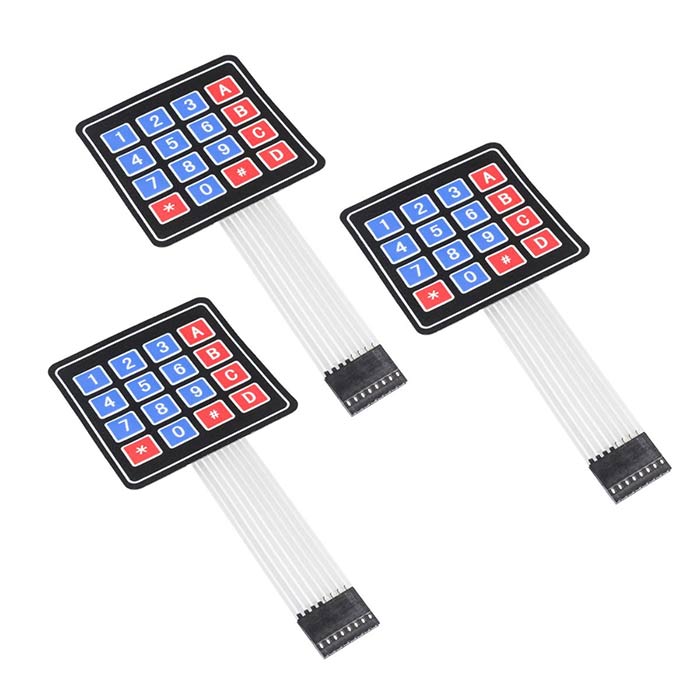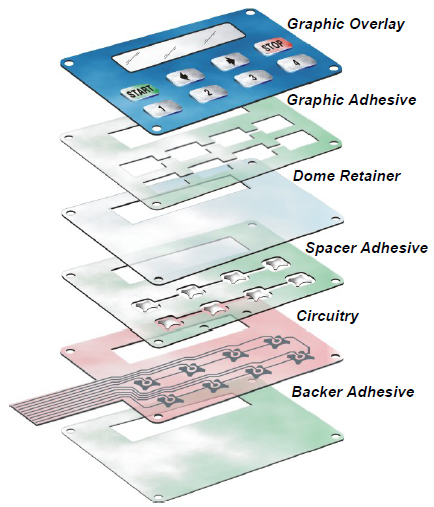Projects requiring high standards should always involve a qualified membrane switch manufacturer from the start.
Projects requiring high standards should always involve a qualified membrane switch manufacturer from the start.
Blog Article
All Regarding Membrane Layer Switch: Understanding Its Design and Performance
When you consider the control interfaces in modern tools, membrane buttons commonly come to mind. These components are a lot more than simply buttons; they blend design and functionality seamlessly. Comprehending how they function and what makes them efficient can change your viewpoint on daily electronics. However, there are subtleties to their style and performance that you might not understand. Allow's explore what collections membrane layer changes apart from various other control systems.
What Are Membrane Switches?

Membrane layer buttons can likewise be personalized relating to form, size, and graphics, allowing manufacturers to develop special interfaces tailored to specific items. On the whole, membrane buttons play a substantial role in improving customer experience throughout a broad range of applications.
How Membrane Changes Job
When you press a key on a membrane layer switch, it activates an uncomplicated yet reliable system. membrane switch manufacturer. The top layer, commonly made of adaptable material, pushes down onto a conductive layer beneath it.
You'll observe that the tactile feedback varies based on the switch layout, offering either a soft click or an extra pronounced response. As soon as you launch the secret, the membrane go back to its initial position, reopening the circuit and stopping the signal. This procedure occurs nearly immediately, ensuring a receptive individual experience.
Membrane layer buttons are preferred due to their resilience and resistance to dust and wetness, making them suitable for different applications, from household appliances to medical gadgets. Recognizing this procedure assists you appreciate their prevalent usage.
Secret Elements of Membrane Layer Buttons
Recognizing the key elements of membrane switches is basic for realizing their performance and design. At the core, you'll find the graphic overlay, which offers the aesthetic interface for individuals. Under that, there's a spacer layer that separates the circuit layers, making certain that they don't make contact until pressed. The circuit layer is where the magic happens; it includes conductive traces that complete the circuit when you press the button. Another important element is the sticky backing, permitting the switch to follow surface areas firmly. The safety layer guards versus ecological aspects and put on, extending the button's lifespan. Each part plays a significant role in making certain trusted efficiency and individual communication. By comprehending these parts, you'll gain understanding right into just how membrane switches operate and their relevance in numerous applications.
Materials Utilized in Membrane Layer Switch Style
The performance and durability of membrane switches over greatly depend on the materials utilized in their layout. You usually experience polyester and polycarbonate as key substrates because of their superb toughness and flexibility. These materials withstand scratches and chemicals, making them optimal for requiring environments.
The conductive layers commonly make use of silver or carbon, chosen for their dependability and conductivity. membrane switch manufacturer. Silver provides remarkable efficiency, while carbon is an economical alternative. For the overlay, you may think about a matte or shiny surface, depending upon your aesthetic demands and user experience
Make specific to select adhesives that endure environmental aspects like temperature level and humidity. Selecting the right materials will ensure your membrane switch stands the examination of time.
Style Considerations for Membrane Layer Buttons
While making membrane buttons, it's crucial to take into account different variables that view it affect their functionality and user experience. Start by focusing on the format and switch dimension; make particular they're user-friendly and easy to navigate.
Validate your design accommodates ecological aspects, like moisture or temperature level variations, which could affect efficiency. By meticulously taking into consideration these aspects, you'll produce a membrane layer switch that improves functionality and satisfaction.
Applications of Membrane Switches
Membrane layer switches are functional components discovered in numerous applications, from industrial tools to consumer electronic devices. You'll see their impact in machines that require long lasting interfaces and in tools that take advantage of smooth styles. Understanding these applications aids you value the functionality and functionality of membrane layer switches in everyday technology.
Industrial Tools Usage
When you're looking to enhance the functionality of industrial equipment, membrane layer switches offer a reliable service that integrates sturdiness with easy to use style. These switches are ideal for extreme settings, providing resistance to dirt, moisture, and my site chemicals. Embrace membrane layer buttons to simplify your procedures and boost overall performance.
Consumer Electronic Devices Combination
In the domain of customer electronic devices, membrane switches play an important role in enhancing user communication and device performance. You'll discover them in gadgets like microwaves, push-button controls, and pc gaming consoles, offering a seamless way to communicate with technology. Their streamlined design permits easy combination right into different items, making controls instinctive and user-friendly. With their capacity to integrate graphics and backlighting, you can appreciate a modern-day aesthetic that matches the gadget's overall appearance. Membrane layer switches likewise ensure resilience and resistance to dust and wetness, extending the life expectancy of your electronics. By choosing membrane layer buttons, you improve not just the performance yet likewise the design Home Page of your tools, making day-to-day communications smooth and delightful.
Advantages and Drawbacks of Membrane Layer Switches
While membrane switches use a range of advantages, they likewise come with some disadvantages that you need to take into consideration. One substantial advantage is their portable design, making them optimal for space-constrained applications.

Membrane layer switches can have a shorter life-span contrasted to mechanical switches, specifically under hefty usage. They can additionally be much less tactile, which could influence customer feedback during procedure. Stabilizing these pros and cons will certainly help you establish if membrane layer buttons are the right fit for your task.
Regularly Asked Concerns
For How Long Do Membrane Layer Changes Usually Last?
Membrane switches commonly last between 5 to ten years, relying on usage and ecological conditions. You'll desire to examine elements like wear, exposure to wetness, and temperature level fluctuations to gauge their long life effectively.
Can Membrane Switches Over Be Customized for Details Layouts?
Yes, you can tailor membrane layer switches to fit specific styles (membrane switch manufacturer). You'll have the freedom to pick shades, shapes, and layouts that match your task's needs, guaranteeing they blend seamlessly with your general aesthetic
What Is the Expense Range for Membrane Change Production?
The price array for membrane button manufacturing usually falls in between $1 and $10 each, relying on elements like style intricacy, quantity, and products. You can get quotes from manufacturers to discover the most effective alternative.

Are Membrane Switches Water-proof or Immune?
Membrane layer buttons can be made to be waterproof or resistant, depending upon materials utilized and construction approaches. If you need them for damp environments, assure you define those requirements throughout the layout process.
Just How Do Membrane Layer Switches Over Compare to Conventional Buttons?
Membrane layer switches are typically thinner and more adaptable than standard switches, providing a smooth layout. They're often easier to clean up and incorporate, but could not provide the tactile comments you're made use of to with mechanical alternatives.
Final thought

Report this page